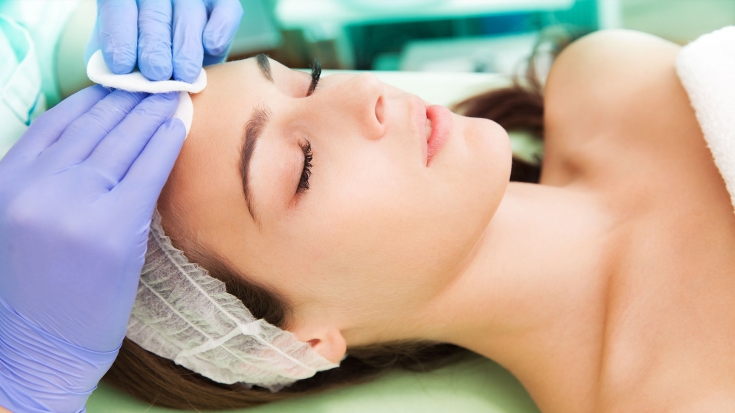Chemical peeling remains the most popular procedure in any cosmetology clinic. Its success largely depends on the ability to select a variety of agents, regulate the depth of their penetration and achieve good results in different skin conditions. The ingredients for chemical peels are usually alpha hydroxy acids, the most familiar and commonly used of these – glycolic acid. Glycolic acid peels can target the cells of different layers of the skin and produce noticeable results quickly. Read about the features of the use of glycolic acid in skin care at estet-portal.com.
Small and distant: molecular activity in glycolic acid peel
Glycolic acid has several unique properties that make it the most popular treatment agent for peels:
- the smallest molecule size among all alpha hydroxy acids that are used in cosmetology, which allows it to quickly penetrate the skin;
- Low acidity, so that the acid molecules have virtually unlimited penetration into the skin.
Like other alpha hydroxy acids, glycolic acid rapidly lowers skin pH when applied to the skin. This destabilizes lipids in the protective mantle of the skin. Cellular bridges between proteins are destroyed, and the cells of the stratum corneum lose their connection with each other. All these processes provide the expected exfoliating effect.
Glycolic acid differs from others in that its molecules penetrate the skin very quickly and without hindrance, causing an immediate reaction – bright redness, peeling and even the cessation of sebum secretion at the site of application.
Glycolic acid peeling results in smooth and thin skin, which acquires these properties literally before our eyes.
Features of the anti-aging effect of peeling with glycolic acid
Glycolic acid differs from other similar substances used in peelings in its ability to act on the dermal layer of the skin. With such an impact, collagen begins to be synthesized in the dermis, hyaluronic acid is produced – remodeling processes start. The higher the concentration of the acid and the lower its pH, the more it stimulates the remodeling of the dermis.
Glycolic acid peels thin the epidermis and thicken the dermis. Wrinkles on the skin are smoothed from above by reducing the stratum corneum and filled from below by lifting the dermal layer, becoming less noticeable.
Glycolic acid accelerates cell renewal processes, their speed becomes approximately the same as that characteristic of young skin. It gives the skin brightness, freshness and youth.
Glycolic acid cleanses the ducts of the sebaceous glands and reduces the oiliness of the skin, prevents the appearance of comedones. These properties make glycolic acid peels an important part of problematic skin care.
Another valuable property of glycolic acid – in low concentrations (less than 20 percent) it is able to restore the healthy synthesis of melanin pigment.

Dangers and Warnings About Glycolic Acid Peels
Despite the good knowledge of glycolic acid and the long history of its use in peels, the doctor must remember that different manufacturing companies may have certain characteristics of the peeling composition, and these must be taken into account before using the drug.
Glycolic acid – "winter" peeling ingredient, since it greatly increases the sensitivity of the skin to ultraviolet radiation. Even a short exposure to the inactive sun after a glycol peel can lead to burns and hyperpigmentation.
Increased skin sensitivity to sunlight persists for several weeks after peeling with glycolic acid. Therefore, such procedures should be completed 1-2 months before the onset of the active sun season.
Another disadvantage of glycolic peeling is that it thins the surface layer of the skin and makes it defenseless against infections. This is especially dangerous for skin with acne, as the risk of inflammation increases. Complications after peeling with glycolic acid can be prevented by observing the following hygiene measures:
- change pillowcases, towels more often – all underwear that comes into contact with the skin of the face;
- after washing, blot your face with disposable wipes;
- apply makeup with disposable sponges;
- wash and sanitize hands more frequently,
For hypersensitive skin peeling with glycolic acid – not the best choice, as it can create a dehydrating effect and cause excessive flaking, cause persistent erythema and rosacea.







Add a comment